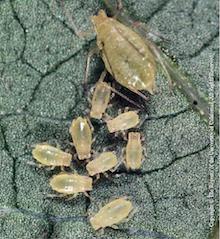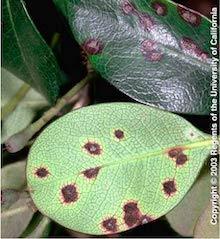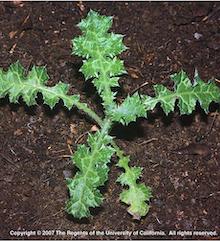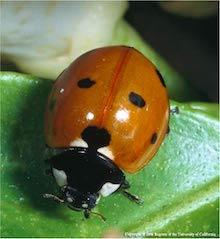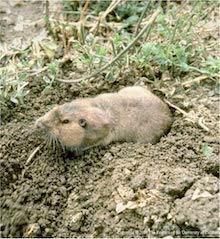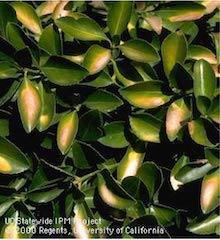
Pests, Diseases, and Weeds: Safe and Sustainable Management through IPM
Integrated Pest Management (IPM) involves the use of environmentally sound, effective practices to keep pests, diseases, and weeds from damaging gardens. IPM begins by identifying the pest, disease, or weed, then selecting the most effective methods and materials for controlling the problem. The emphasis of this process is on avoiding the use of chemicals harmful to humans, pets, wildlife, and the environment.
An IPM program includes the following actions:
- Determine the problem: Identify the pest, disease or weed causing the problem. No single solution fits all problems.
- Alter the garden environment and gardening practices: Deprive the pest, disease or weed of conditions promoting their survival and proliferation.
- Use simple methods to control problems: Squash, trap, wash off, or prune out rather than first reaching for a chemical solution.
- Encourage beneficial insects and spiders to live in your garden: Welcome beneficials to prey on harmful insects.
For more information about using IPM to control pests, diseases and weeds in the home garden:
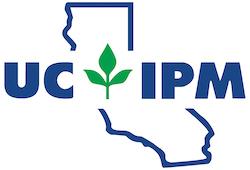 |
Click on each link below for the following discussions on controlling pest problems and their solutions:
Insects and Other Invertebrate Pests in the Garden
Not all insects and other invertebrate pests wreak havoc in the garden. In fact, most are beneficial and should be encouraged to visit home gardens.
- Some insects, however, as well as mollusks (slugs and snails), mites, and nematodes can cause serious damage to garden plants if not addressed. Signs of invertebrate damage might include:
- chewed or tattered leaves or flowers
- stippled, yellowed, bleached, or bronzed foliage
- distorted plant parts or dieback
- evidence of their a pest’s products (e.g., sticky substances, dark specks, tents and webs, spittle, cast skins, pitch masses or tubes, cottony and waxy materials, slime)
- Prior to selecting a treatment method, it is important to search for the presence of invertebrates or evidence of their presence as described above.
- Many pests are host-specific, so it is important to know the identity of the affected plant.
- Plants that look stressed or otherwise damaged are often a result of adverse climatic or environmental conditions rather than insects or other invertebrates, so it is worth considering environmental conditions in the garden before assuming the damage is caused by a pest.
- Other factors include water availability, temperature extremes, and soil fertility.
- Keep in mind that most garden pests can be addressed without the use of chemical pesticides.
- In fact, many insect outbreaks occur because a broadly toxic insecticide was applied to control a pest, and natural enemies of the pests (the beneficial invertebrates) were killed as a result.
- Instead of chemical applications, pests can be effectively controlled by trapping, exclusion, hand-picking or spraying with water.
- Pest-resistant varieties of many plants are available at local garden centers and nurseries.
- Garden practices can be modified to make gardens less attractive to pests and more attractive to the beneficials.
For more information on pest identification and management in the home garden:
Diseases in the Garden
Plant diseases are caused by fungi, bacteria, viruses, and other microorganisms. The pathogens responsible for diseases are often microscopic and may not be as easily recognized as insects or other pests.
- Signs and symptoms of disease on garden plants include wilting, browning, yellowing, leaf spots, deformed leaves, and fungal growth.
- For a disease to occur, three factors must be present
- a host plant that is susceptible to a disease
- a disease-causing pathogen
- an environment suitable for the pathogen to cause the disease
- A disease can be prevented or managed by disrupting any one of these factors.
- Plant diseases may be controllable with a combination of cultural practices and management procedures.
- However, once plants are infected by disease-causing organisms, very few treatments will cure the disease.
- Ideally, conditions that lead to diseased plants should be prevented before infection rather than trying to eliminate them after infection.
- Prior to selecting a treatment method, the identity of disease should be known.
- Many diseases are host-specific, so it is important to know the identity of the infected plant.
- Plants that look stressed or otherwise damaged are often a result of adverse climatic or environmental conditions rather than diseasing-causing pathogens, so it is worth considering environmental conditions in the garden before assuming the damage caused by a disease.
- These conditions might include water availability, temperature extremes, and soil fertility.
For more information on disease identification and management in the home garden:
Weeds in the Garden
A weed, by definition is any plant growing out of place. In the case of gardens, a weed is a plant growing where it is unwanted or interferes with more desirable plants.
- Weeds in the garden compete with desirable plants for limited supplies of space, water, mineral nutrients and sunlight.
- They are durable and tenacious on account of their prolific seed production, long-term seed dormancy, and/or vigorous underground reproductive structures, including rhizomes and bulbs.
- Weeds are often tolerant of heat, drought, flooding, and can become resistant to herbicides that were formerly effective in their control.
- There are other undesirable characteristics of weeds.
- They can serve as hosts for insect pests and pathogens.
- Weeds increase the likelihood of disease because they can serve as an overwintering host when your desirable garden plants are dormant.
- They provide cover or food for vertebrate pests, especially rodents.
- Weed pollens are allergens to many people, contributing to hay fever allergies, and some weed foliage cause contact skin dermatitis in sensitive people.
- The goal in a home garden weed management program is to select the most effective control practice that is least harmful to people and the environment.
- There are many alternatives to chemical weed control methods, starting with identification of the weed, followed by selection of the most effective control method for that particular species of weed.
For more information on weed identification and management in the home garden:
- Common Weeds in Sonoma County
- UCIPM Weed Photo Gallery
- UCIPM Weed ID Tool
- UCIPM Weed Management in Landscapes Pest Note
- UCIPM Woody Weed Invaders Pest Note
- UCIPM Invasive Plants Pest Note
Beneficial Insects and Spiders in the Garden
Most insects and spiders in the garden play a beneficial role, serving as predators or parasites of other insects, nematodes, and weeds.
- Beneficial insects and spiders are also known as natural enemies because they can control pests in the garden by decreasing the reproductive potential or reducing the numbers of pests in the garden.
- Beneficial insects and spiders can be encouraged by avoiding use of pesticides that kill them, choosing plants and provide them with pollen, nectar, and shelter; and keeping ants out of pest-infested plants.
- Natural enemies that limit pests are key components of integrated pest management programs.
- Important natural enemies of insect and mite pests include predators, parasitoids (parasites), and pathogens.
- Spiders are often believed to be dangerous and aggressive.
- However, most spiders are beneficial in the garden because they feed on pest insects.
- Spiders seen out in the open during the day are unlikely to bite people.
For more information about beneficial organisms:
- Biological Control and Natural Enemies of Invertebrates
- Beneficial Predators
- Common Garden Spiders
- Lady Beetles (Lady Bugs)
- Parasites of Insect Pests
Problems with Birds and Mammals in the Garden
Our local wildlife is a much-treasured resource until animals cause damage in the garden. They are attracted to gardens and landscapes because they provide food, water, or shelter.
- Some birds, including starlings, sparrows, finches, jays, robins, and crows can cause substantial damage when they feed on ripening fruit and nuts.
- Many animals, including gophers, voles, moles, skunks, and ground squirrels will dig in gardens, damaging or eating plants as they go about their business.
- Other animals including deer, rabbits, opossum, rats, and tree squirrels feed on the above-ground portions of plants.
- Birds and mammals that harm your garden can be managed through various measures, including exclusion, trapping, or garden modifications to make it less attractive.
- If you think you have an animal pest but are not sure what it is, the Wildlife Pest ID Tool will help you narrow down potential vertebrate pests using signs such as typical damage, tracks, and droppings (scat).
For more information on wildlife pest identification and management:
Disorders Caused by Adverse Conditions in the Garden
Many garden problems are the result of adverse environmental conditions rather than insects or disease.
- Improper irrigation (too much or too little) is probably the most common cause of plant damage. Other common problems include sunscald, frost damage and winter(cold) damage. Other issues include air pollution, herbicide damage, nutrient deficiencies, salt injury, and mechanical damage.
- Often, the primary cause of plant decline or death may be an environmental condition that is followed by insects and diseases attacking plants that are stressed or weakened.
- Recognizing and addressing adverse environmental conditions before garden plants are weakened and prone to insects and diseases is a critical component of any integrated pest management program.
For more information about some common environmental disorders:
- Freezing and Frost
- Herbicide Toxicity
- Mechanical Injury
- Nutrient Deficiencies
- Sunburn
- Water Deficit and Excess
- Wind
What about Pesticides?
Pesticides (insecticides, herbicides, fungicides) are designed to be toxic to the pests they target. However, when used excessively or when label instructions aren’t followed correctly, several problems may occur.
- Human and animal health may be impaired
- Pesticides may contribute to soil, air, or water pollution
- Plants may be injured
- Pests may not be controlled
- Pollinators and beneficial insects may be harmed
In IPM, the least toxic pesticides are selected, used only when needed, and then in combination with other approaches.
- Use pesticides only when nonchemical methods are ineffective and pests are reaching intolerable levels; then, choose the least toxic, most effective product. Examples include soaps, oils, microbials such as Bacillus thuringiensis (Bt), and spinosad.
- Pesticides should be selected and applied in a way that minimizes their possible harm to people, nontarget organisms, and the environment.
- With IPM, you'll use the most selective pesticide that will do the job and be the safest for other organisms and for air, soil, and water quality.
For more information on pesticides:

